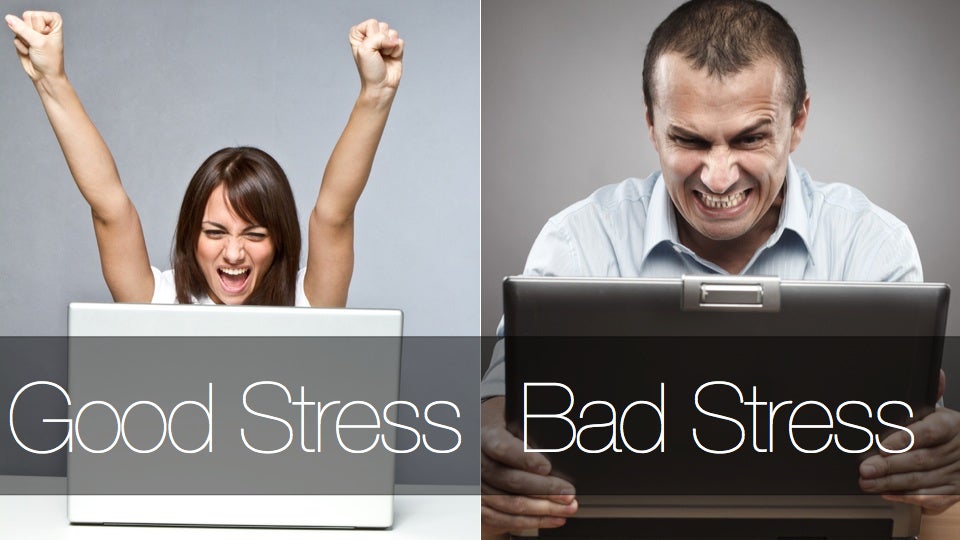Introduction
Stress is a natural response that we all experience in our lives. It can motivate us, push us to achieve our goals, and help us perform better. However, not all stress is beneficial. Excessive or chronic stress can have negative effects on our physical and mental well-being. In this comprehensive guide, we will explore the difference between good stress and bad stress, the effects they have on our bodies and minds, and strategies to manage stress effectively. Let’s delve into this topic to gain a better understanding of stress and its impact on our lives.
Section 1: Defining Good Stress and Bad Stress
1.1 Good Stress (Eustress)
Good stress, also known as eustress, is a positive form of stress that can enhance our performance, motivation, and overall well-being. It is typically short-term and manageable, often resulting from exciting events, challenges, or goals. Good stress pushes us out of our comfort zones and stimulates personal growth and achievement. Examples of good stress include starting a new job, preparing for a presentation, or participating in a competitive sports event.
1.2 Bad Stress (Distress)
Bad stress, also known as distress, is the negative form of stress that overwhelms and disrupts our daily functioning. It is often prolonged, intense, and uncontrollable, leading to negative physical and psychological effects. Distress can result from factors such as work pressure, relationship difficulties, financial problems, or traumatic events. When distress becomes chronic, it can significantly impact our health, relationships, and overall quality of life.
Section 2: Effects of Good Stress
2.1 Motivation and Performance Enhancement
Good stress can act as a motivator, propelling us to take action and perform at our best. It provides a sense of challenge and excitement, leading to increased focus, productivity, and creativity. When we experience good stress, our bodies release stress hormones like adrenaline and cortisol, which can sharpen our senses and improve cognitive function.
2.2 Personal Growth and Resilience
Facing and overcoming challenges through good stress can foster personal growth and build resilience. It helps us develop problem-solving skills, adaptability, and self-confidence. By embracing good stress, we learn to push our boundaries and discover our strengths and capabilities.
2.3 Increased Physical Energy
Good stress can provide a temporary boost of energy and heightened physical arousal. This can be beneficial for engaging in physical activities or sports, as it can enhance performance, strength, and endurance. The adrenaline released during good stress can improve reaction times and increase our overall physical readiness.
Section 3: Effects of Bad Stress
3.1 Negative Impact on Physical Health
Chronic exposure to bad stress can have detrimental effects on our physical health. It can weaken the immune system, leading to increased susceptibility to illnesses. Bad stress has been associated with a higher risk of cardiovascular diseases, high blood pressure, digestive disorders, and compromised sleep patterns.
3.2 Mental Health Disorders
Prolonged exposure to bad stress can contribute to the development of mental health disorders. Conditions such as anxiety disorders, depression, and post-traumatic stress disorder (PTSD) can be triggered or exacerbated by chronic stress. Bad stress can affect our mood, cognitive function, and overall mental well-being.
3.3 Relationship Strain
Bad stress can place a significant strain on our relationships. When we are overwhelmed by stress, it can affect our communication, emotional availability, and ability to resolve conflicts. This can lead to increased tension, misunderstandings, and a decline in relationship satisfaction.
Section 4: Managing Stress Effectively
4.1 Recognizing and Assessing Stress
To effectively manage stress, it is important to recognize its presence and assess its impact on our lives
4.1 Recognizing and Assessing Stress
To effectively manage stress, it is important to recognize its presence and assess its impact on our lives. Pay attention to physical and psychological symptoms such as headaches, fatigue, irritability, difficulty concentrating, or changes in sleep patterns. Take note of the situations or triggers that cause stress and evaluate how they affect your overall well-being.
4.2 Developing Healthy Coping Mechanisms
Developing healthy coping mechanisms can help mitigate the negative effects of both good and bad stress. Consider incorporating the following strategies into your daily routine:
Practice relaxation techniques: Engage in activities such as deep breathing exercises, meditation, or yoga to promote relaxation and reduce stress levels.
Engage in physical activity: Regular exercise helps release endorphins, which are natural mood boosters. Find an exercise routine that suits your preferences and make it a part of your daily routine.
Prioritize self-care: Take time for self-care activities that bring you joy and relaxation. This can include hobbies, spending time in nature, taking a bath, or engaging in creative outlets.
Maintain a balanced lifestyle: Ensure you have a healthy balance between work, personal life, and leisure activities. Set boundaries, practice time management, and prioritize activities that promote your well-being.
Seek support: Reach out to friends, family, or a support network when you need to talk or seek advice. Professional support, such as therapy or counseling, can also be beneficial in managing stress.
4.3 Time Management and Prioritization
Effective time management and prioritization can help reduce stress levels. Break tasks into manageable steps, set realistic goals, and create a schedule that allows for breaks and downtime. Prioritize tasks based on importance and deadlines to avoid feeling overwhelmed.
4.4 Establish Healthy Boundaries
Setting healthy boundaries is crucial for managing stress. Learn to say no when necessary and avoid overcommitting yourself. Communicate your limits and needs to others and create a balance between giving to others and taking care of yourself.
4.5 Practice Mindfulness
Mindfulness involves being fully present in the moment and accepting it without judgment. It can help reduce stress by shifting focus away from worries about the past or future. Incorporate mindfulness practices such as mindful breathing, body scans, or mindful eating into your daily routine.
Conclusion
Understanding the difference between good stress and bad stress is essential for maintaining a balanced and healthy lifestyle. While good stress can motivate and enhance performance, bad stress can have detrimental effects on our physical and mental well-being. By recognizing stress, developing healthy coping mechanisms, and practicing effective stress management strategies, we can navigate the challenges of life with resilience and improve our overall quality of life. Remember that seeking support and professional help is always an option when dealing with excessive or chronic stress. Embrace the positive aspects of stress and learn to manage the negative ones to live a more fulfilling and balanced life.
- Benefits of Chaga Mushroom Supplements - March 29, 2024
- Benefits of Cantaury Supplements - March 29, 2024
- Benefits of Cats Claw Supplements - March 21, 2024

